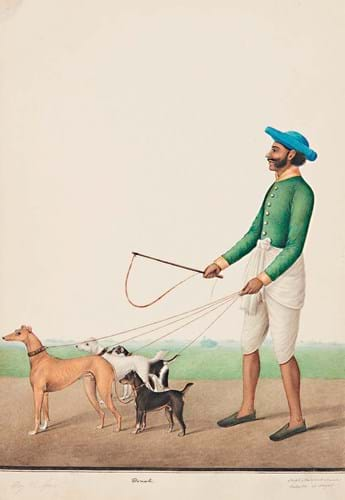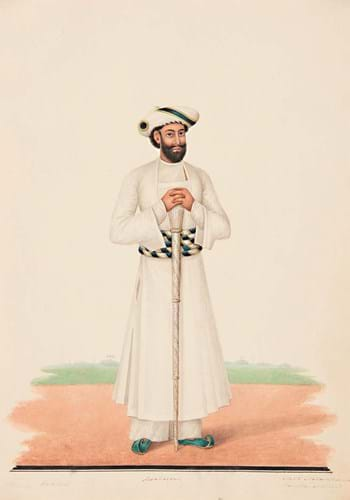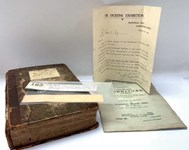The sale of Rare Books, Manuscripts, Maps & Photographs at Lyon & Turnbull (26/25/20% buyer’s premium) in Edinburgh on June 21 was topped by an album of 26 watercolours by one of the leading 19th century practitioners of ‘Company School’ painting.
Relatively little is known of his life but Shaykh Muhammad Amir of Karraya was considered the most talented of the Indian artists working for European patrons in Calcutta in the second quarter of the 19th century.
In 1844 the traveller Fanny Parkes purchased a set of his paintings, publishing a selection in her 1850 travel memoir, Wanderings of a Pilgrim in Search of the Picturesque. Others by the Shaykh were part of the famous Holroyd album (now dispersed) that was produced for Calcutta merchant Thomas Holroyd and given by him to the Oriental Club in 1839.
In 2019-20, six paintings by Shaykh Muhammad featured in the Forgotten Masters exhibition of Company School paintings at the Wallace Collection in London.
Curator William Dalrymple wrote: “The Shaykh was equally at home painting a Palladian house or thoroughbred horse, a group of dhobis or a pair of dogs. His single figures are sometimes shown in the Mughal tradition, in profile … but when he wished to, could paint in a more European style than any of his rivals. He had completely mastered perspective, foreshortening and shading, giving his work a realism and naturalism unique among Indian artists of his generation.”
Ecological awareness
The watercolours in this album, bound in contemporary green half Morocco, were all signed Shekh Mahomed Ameer, Calcutta at Karyah (or similar).
They came by descent from Edward Green Balfour (1813-89) who first travelled to India in 1834 as an assistant surgeon in the Madras medical service. His most influential work in his own day was his Enyclopaedia of India and Southern Asia, published at Madras in 1857.
Today he is also remembered for his pioneering ecological writings, which explored what he believed to be the ‘direct relationship between deforestation, climatic change, and environmental degradation’.
As the largest group of his watercolours to come to market in recent memory, they were guided at £15,000-20,000 but sold at £90,000.
Scarce catalogue

Wedgwood & Bentley catalogue of cameos, intaglios, medals, busts, small statues, and bas reliefs, 1777, £1400 at Lyon & Turnbull.
Another aspect of this sale was the British pottery and porcelain library of a Scottish collector.
A gem of the collection was a well-preserved 1777 edition of the Wedgwood & Bentley catalogue of cameos, intaglios, medals, busts, small statues and bas reliefs. Estimated at £250-350, it took £1400.
This scarce catalogue was the fourth edition but, including many additions, is considerably larger than the first of 1773. In particular, the introductory text for each section includes valuable commentaries on the ongoing improvements in manufacturing methods and the development of Wedgwood’s business activities.
It includes references to a recently perfected “fine white artificial jasper, of exquisite beauty and delicacy; proper for cameos and bas-reliefs”.
Josiah Wedgwood’s partnership with Thomas Bentley for the manufacture and sale of ornamental goods began in 1768.
A house was built for Bentley as part of the Etruria Works that opened the following year, but he doesn’t seem to have occupied it. Instead, he moved to London, living first in Chelsea and then at 12 Greek Street in Soho – the shop address mentioned on the cover of this catalogue. Bentley was plagued by ill health and died in 1780.
To wind up the Wedgwood & Bentley accounts, all the stock was sold by auction at a Christie’s sale lasting 12 days.















